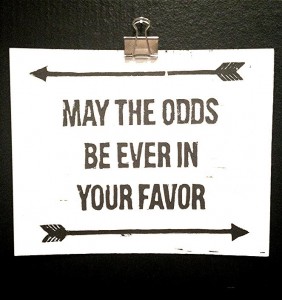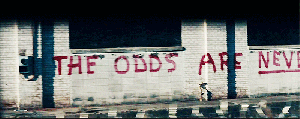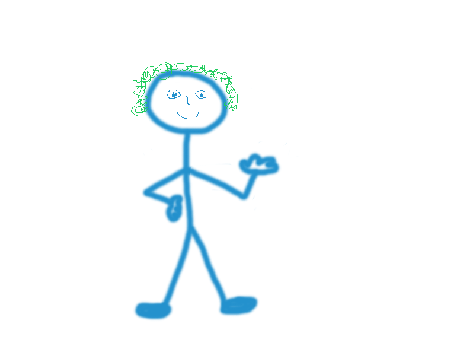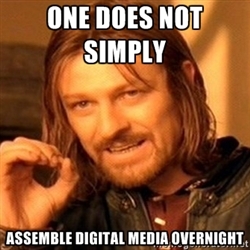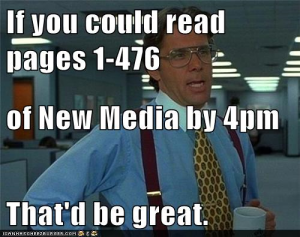What is New Media?
Before I answer (or attempt to answer that question) let us first pose the question… What is “new”?
According to Merriam-Webster, new simply means not old. That is fairly straight-forward. However, a more lengthy definition is “having recently come into existence.” But isn’t everything new a reincarnation of something old? My favorite definition of “new” is the beginning or repetition of a previous act or thing, as in a “new” day, or a “new” beginning.
New question. Since we kind of have a grip on what “new” means, what about the word “media”? Most definitions are in agreement with this one. Media is the plural form of medium. The word media, as we are familiar with it, was born in the world of advertising over 70 years ago. In more recent times we have attributed the word to mean the sources from where we receive our information (the phenomenon known as the NEWS MEDIA… dun dun da!)
So what is new media? Taking from the above meanings and expanding we can come up with a volley of different answers, each one right in their own way. However, Len Manovich describes new media to mean material that is distributed via a computer. Manovich reasons that texts made available to read on a computer screen or photographs on a CD-ROM or DVD that require a computer to be viewed are examples of new media. Paper copies of these items are not.
In The Language of New Media, Manovich gives his five principles of what new media needs to be. Those five principles are:
- Numerical representation – Media becomes programmable. All new media is composed of digital code.
- Modularity – Media can be represented as collections of many different ideas. Take a piece from this and put it with this and get this, something completely different.
- Automation – The first two principles enable new media to be automated. Photoshop is an example of a process that has been automated. Now you can tweak a stray line here, or add a cloud there, automatically.
- Variability – A perk of new media is that it is constantly changing. You can take a piece of information and modify it so that you get something different, but the original has the capacity to remain the same as it always was.
- Transcoding – a combination of the cultural layer and the computer layer of a program or idea. The examples of categories on the cultural layer are encyclopedia and a short story; story and plot; composition and point of view; mimesis and catharsis, comedy and tragedy. The examples of categories on the computer layer are process and packet (as in data packets transmitted through the network); sorting and matching; function and variable.
All five principles together are what creates and helps define “New Media”.
Last question, since we know what new media is what is not new media? Just because something is digital does not automatically mean that it is new. To answer this question, we have to go back to the simple definition of new… not old. The best example of old media is a classic, leather-bound edition of Shakespere’s Romeo and Juliet, a manuscript written in the old style of paper and quill.
But as the saying goes, everything old is new again. And there is no such thign as a new idea. It is only a better idea.
Len Manovich, The Language of New Media, Chapter 1 – What is New Media?


